CardEd
3 CardEd Communication Boosters (+ Free Download!)
Finding ways to increase communication and dialogue in the classroom is a regular Dumond theme. Today, we introduce 3 quick and easy activities using CardEd.
These are based on common games and may already be familiar to you. The importance of fun and creating a positive learning environment cannot be underestimated, so having a wide repertoire of entertaining educational activities is always helpful.
In future posts, we will demonstrate a wider application of these activities to support the development of learning and study skills, so subscribe or check back for that.
Who / What am I? (Version 1)
This is a quick and easy oral language task using CardEd Sets 1 or 4.
- Using the CardEd Set 1 / 4 Word Zone, write down a proper noun for each child on a sticker / sticky note.
- Omit any categories you feel may be too challenging for the child to ask questions on / where they have insufficient subject knowledge.
- Ask the child to close their eyes and to stick the sticker / sticky note on their back. Sometime this game is played with sticky notes on foreheads / cards held against foreheads.
- Children must circulate asking yes / no questions of their peers in order to ascertain who / what is on their sticker. For example,
Am I a geographical feature? No
Am I a woman? No
Am I currently alive? No
Was I an explorer (musician / author / artist / leader etc.)? No
Was I an artist? Yes
Was I from Spain? No
Was I from Italy? Yes
Am I Leonardo da Vinci? Yes
- Who can establish their identity with the fewest questions possible?
Note: Model the technique with the whole class first to ensure children are comfortable and confident in forming questions requiring yes / no answers.
Who / What am I? (Version 2)
This is another quick and easy oral language task using CardEd Sets 1 or 4.
- This activity is played in pairs (described as child A and B for ease) and a timer is required.
- Decide on an appropriate time limit (1 minute / 90 seconds / 2 minutes).
- Ask child A to select a card from the deck and identify the noun on it.
- They must provide their partner, child B, with clues in order to describe what is on the card.
- If the child doesn’t have the subject knowledge to provide a clue, they can pass. You may wish to limit the number of passes allowed per round.
- If playing with a whole class*, ensure all are ready to start when you set the timer.
- If child B guesses correctly, they are handed the card, and child A selects another and continues to provide clues.
- When the time is up, swap roles.
- Who collected the most cards?
Discuss:
- How challenging was it to provide clues under pressure?
- Are there any clues they have thought of since that could have been used?
*Ensure you have sufficient CardEd decks if using as a whole-class activity.
I am _________.
This is a more complex task (using CardEd Sets 1 or 4) as it involves research, writing, and oral language.
- Pupils will need a pen / pencil and paper, access to internet / reference books, and a mini whiteboard and marker.
- Shuffle the cards and have each child select one.
- Without revealing their topic to anyone, they must identify the proper noun in the Word Zone and research it using reference books / internet.
- Using this information, the child must write a series of clues for other pupils to enable them to guess what is on the card.
- The goal is to provide the most general / obscure clues at the outset before revealing more readily-identifying pieces of information.
- Clues should be numbered from 10 – 1.
- Depending on class size and time constraints, it may be useful to divide the pupils into smaller groups for sharing clues or to play the game over a week, with an agreed number of pupils sharing their clues each day, and a running total kept.
- Each child begins the game with 100 points (this can be noted on their mini whiteboard).
- Ask a child to present their clues to the class one-by-one using the sentence starter, “For 10 (9 / 8 etc. ) points,” together with the clue. Ask the child to allow some thinking and answering time after each clue is read aloud.
- When a child thinks they know the answer, they must jot it on their whiteboard and raise their hand.
- A child guessing correctly earns points equal to the value of the clue.
- A child guessing incorrectly loses points to the value of the clue.
- Optional rule: Decide whether or not they are out for the rest of the round.
- Children may be responsible for keeping track of their scores independently. Alternatively, use a tracking sheet if the activity is being run over a few days.
- Sample scoreboards for groups of 5 and 10 (5 / 10 rounds) are included in the download.

What am I? – Sample Activity 1
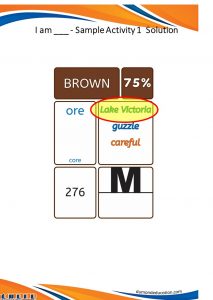
Sample Activity 1 Solution
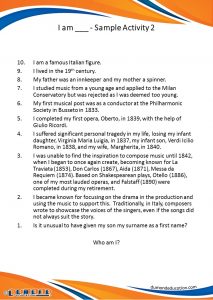
Who am I? – Sample Activity 2
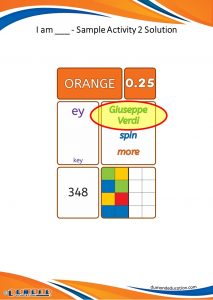
Sample Activity 2 Solution
Download the attached handout which includes the examples outlined here, free cards for pupils to practice with, and score sheets for use in the classroom.
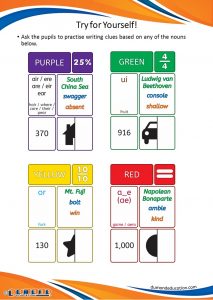
Can pupils create clues for any of these nouns?
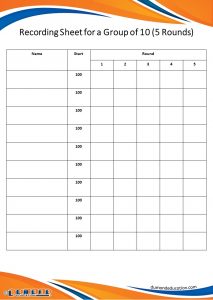
Sample Score Sheet
As mentioned, in future posts, we will demonstrate how these activities can be used in other ways to promote learning and study skills in the classroom.
Get your free download here!
